Hemis National Park, located in the eastern Ladakh region of Jammu and Kashmir, is the largest national park in India, covering an area of around 4,400 square kilometres. Established in 1981, it is renowned for being a habitat of the elusive snow leopard, earning it the title of the “Snow Leopard Capital of India.” The park’s high-altitude terrain, ranging from 3,000 to 6,000 metres, also hosts rare wildlife species like the Tibetan wolf, Eurasian brown bear, and blue sheep. Hemis National Park is a popular destination for wildlife enthusiasts, trekkers, and nature lovers due to its breathtaking landscapes and rich biodiversity.
Quick Details About Hemis National Park
Elevation: 3000 – 6000 metres
Where To Stay: Rumbak Village, Zingchen Village, Leh etc
Where To Eat: The Tibetan Kitchen, Gesmo Restaurant, homestays and Lamayuru Restaurant
Hemis National Park Timings: No specific timings but it is advisable to explore this park during daylight hours, usually between 6 AM and 6 PM
Best Time To Visit: May to October
Location
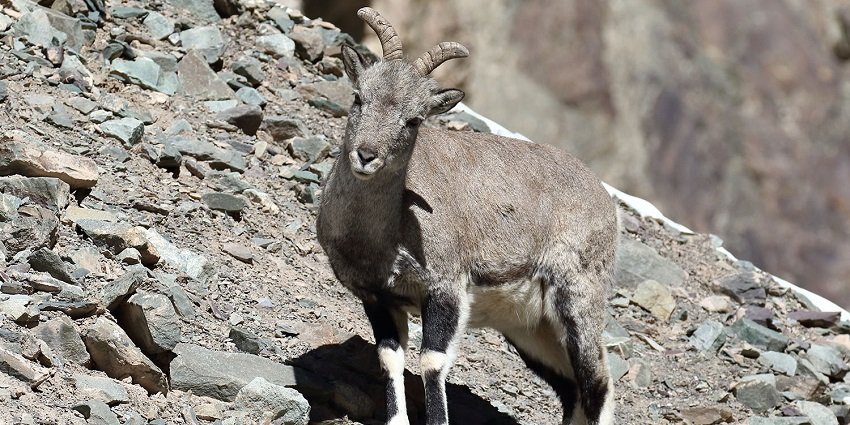
Photo: Fabrice Stoger / Wikimedia Commons
Hemis National Park is located in the eastern part of Ladakh, within the union territory of Jammu and Kashmir. The park is situated to the southeast of Leh, the region’s largest town, and is bordered by the Zanskar Range and includes parts of the Rumbak Valley. The park is easily accessible from Leh, which is around 40 kilometres away and serves as a base for most visitors and trekkers.
Suggested Read: Places To Visit In Leh For A Refreshing Retreat In Nature’s Lap
How To Reach Hemis National Park
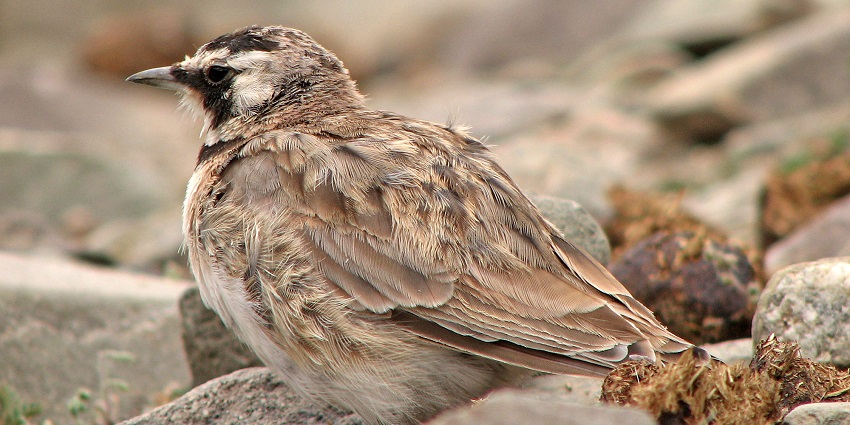
Photo: Karunakar Rayker / Wikimedia Commons
Visitors can reach Hemis National Park for which they will first need to travel to Leh, the nearest town, which serves as a base for most visitors.
By Air: The nearest airport is Kushok Bakula Rimpochee Airport in Leh, which has regular flights from major cities like Delhi, Mumbai, and Srinagar. From Leh, the park is about 40 kilometres away.
By Road: Visitors can hire a taxi or take a local bus from Leh to Zingchen or Rumbak which are the main entry points to the park and the drive takes around 1 hour. Those travelling by private vehicle, can drive from Leh to the park, following the road towards Karu. You can then branch off towards Hemis Monastery, which is closest to the park’s boundary.
By Trekking: After reaching Zingchen or Rumbak, visitors can trek to the park to explore its various areas. The trails are well-known among trekkers and offer scenic views of the surreal landscape.
Things To Do
From spotting rare wildlife and bird species like blue sheep and golden eagles to capturing spectacular landscapes and wildlife while trekking through the park, there are plenty of things to do here.
1. Wildlife Spotting And Bird Watching
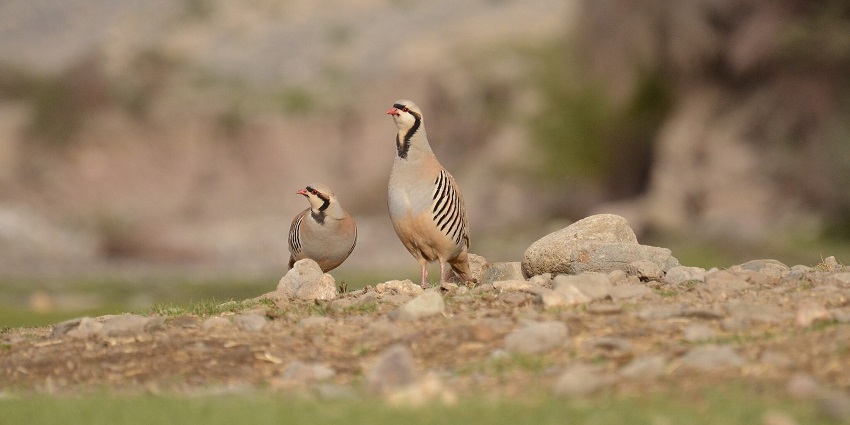
Photo: Kulbhushansingh Suryawanshi / Wikimedia Commons
Hemis is known as the “Snow Leopard Capital of the World.” The winter months (November to March) are the best time for snow leopard sightings. If lucky, you can also spot rare species like the Tibetan wolf, Eurasian brown bear, blue sheep (bharal), and Himalayan marmots. The park is home to a variety of bird species too, including golden eagles, Himalayan griffons, and lammergeiers (bearded vultures), making it a paradise for birdwatchers.
Suggested Read: Top Places To Visit In Nubra Valley
2. Trekking
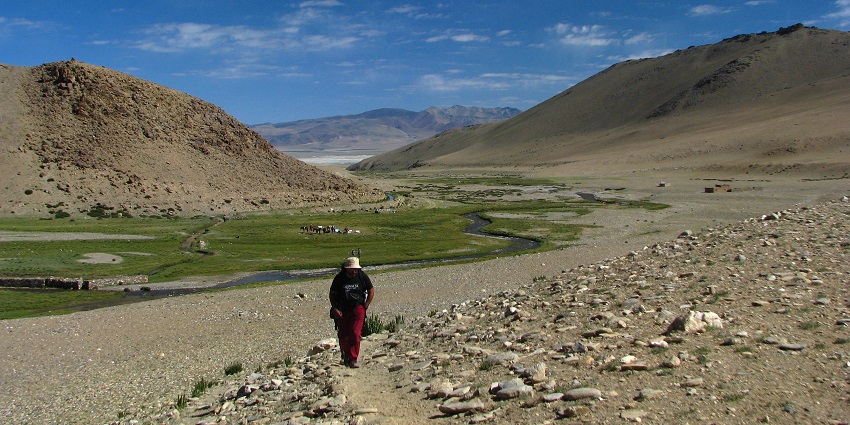
Photo: McKay Savage / Wikimedia Commons / Image For Representation Only
Popular treks in Hemis National Park include the Markha Valley Trek, Rumbak Trek, and routes to Stok Kangri Base Camp. These treks offer stunning views of the rugged landscape, remote villages, and high-altitude passes making it ideal for nature enthusiasts. There are treks for all kinds of enthusiasts here, from simple hikes for beginners to advanced treks for the more experienced ones.
Places To Visit Around Hemis National Park
From exploring serene monasteries to visiting the architecture of the palaces, there are plenty of places to visit around Hemis National Park.
1. Hemis Monastery
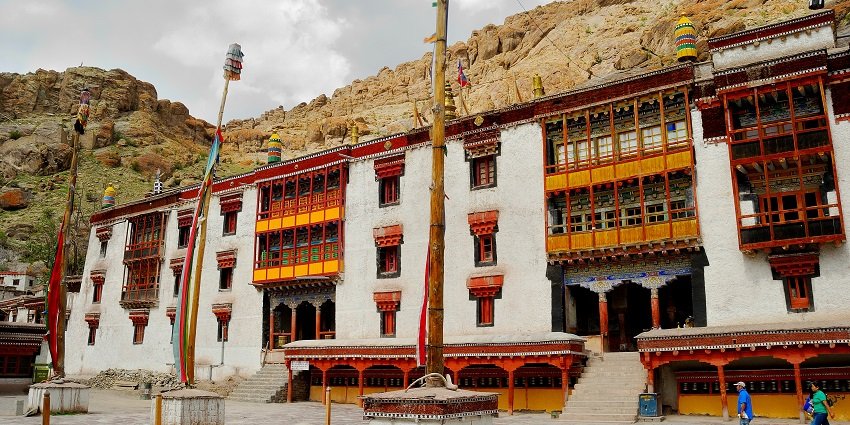
Photo: Shashank Mehendale / Wikimedia Commons
The Hemis Monastery is one of the most important Buddhist monasteries in Ladakh and a spiritual hub for travellers from around the world as well as the locals. The monastery also houses a beautiful museum with ancient artefacts and thangkas (Buddhist scrolls). Additionally, the famous Hemis Festival takes place here in June/July which is the highlight for those visiting the Gompa. The monastery also houses a beautiful museum with ancient artefacts and thangkas (Buddhist scrolls).
Entry Fee: ₹50 per person for Indian nationals and ₹100 per person for foreign tourists
Distance From The National Park: Located within the park’s premises
Suggested Read: Top Things To Do In Leh To Seek Adventure And Beauty
2. Stok Palace
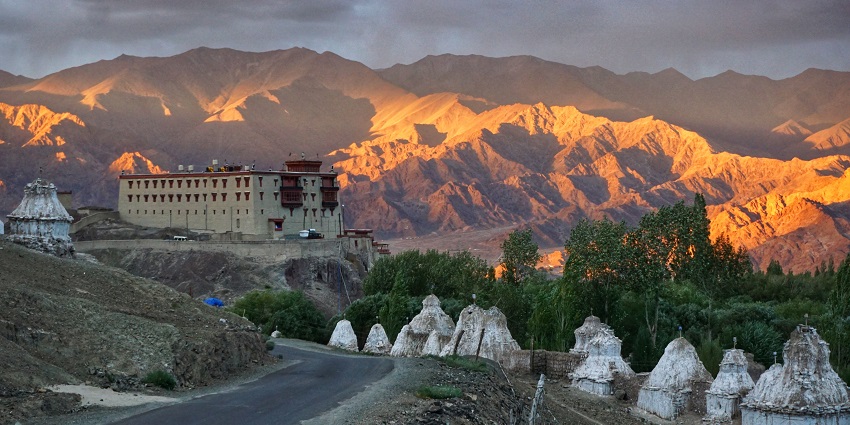
Photo: Deepank Ranka / Wikimedia Commons
Stok Palace was built in 1820 by King Tsepal Namgyal and served as the royal residence of Ladakh’s erstwhile monarchy. It houses a museum showcasing royal artefacts, including thangkas, jewellery, and ceremonial robes, offering a glimpse into Ladakh’s regal past. The palace also features a Buddhist chapel for religious ceremonies. Parts of the palace have been converted into a heritage hotel, allowing guests to stay within the historic structure while enjoying stunning views of the surrounding mountains and experiencing Ladakhi royal culture firsthand.
Entry Fee: ₹50–₹100 for Indian tourists and ₹200–₹300 for foreign tourists
Distance From The National Park: 20 km
3. Thiksey Monastery
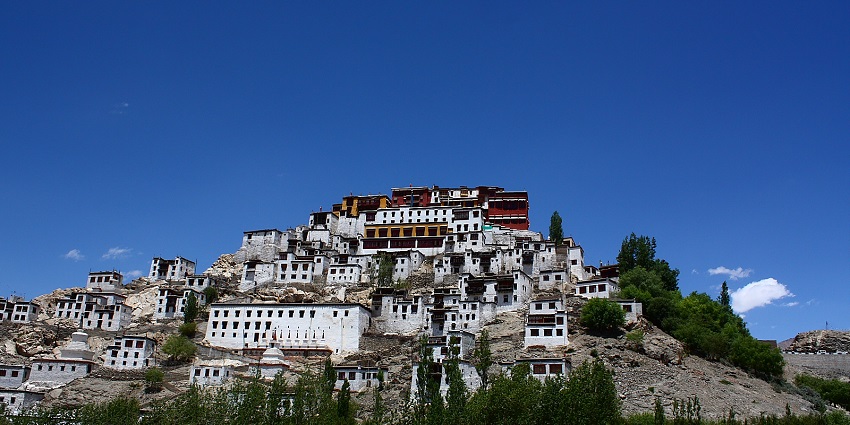
Photo: Aksveer / Wikimedia Commons
Thiksey Monastery is one of Ladakh’s largest and most striking monasteries. Perched on a hilltop, it resembles Tibet’s Potala Palace and offers panoramic views of the Indus Valley. It was founded in the 15th century and belongs to the Gelugpa Tibetan Sect. It houses a 15-metre-tall statue of Maitreya Buddha, the largest of its kind in Ladakh. The monastery complex includes multiple temples, assembly halls, and a nunnery. It is an active spiritual centre where monks perform daily prayers and rituals therefore making it a perfect peaceful escapade within the mountains.
Entry Fee: ₹30 – ₹50 per person for Indian and foreign tourists
Distance From The National Park: 30 km
Suggested Read: Things To Do In Nubra Valley
4. Shey Palace And Monastery
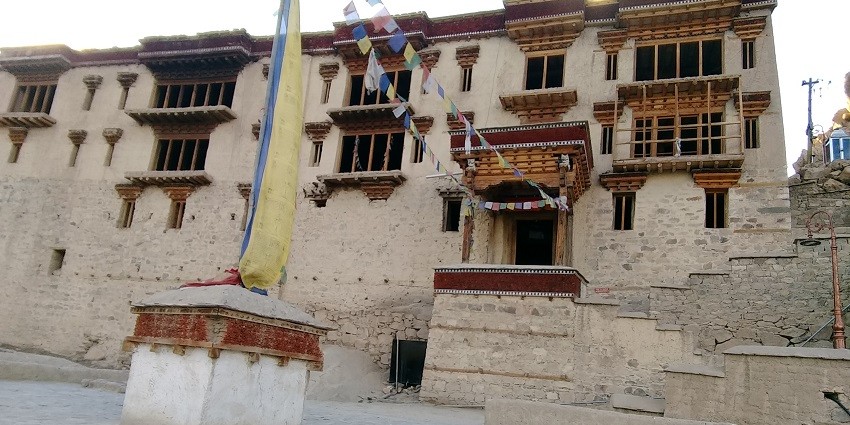
Photo: Kmohankar / Wikimedia Commons
Shey Palace and Monastery was once the summer residence of the kings of Ladakh. It was built in the 17th century by King Deldan Namgyal, the palace sits atop a hill and offers stunning views of the surrounding valleys. The highlight of the palace is the 12-metre-high gilded statue of Buddha Shakyamuni, one of the largest in Ladakh, housed in the monastery. The palace is rich in history and Buddhist art, with wall paintings and murals depicting various Buddhist deities. Visitors can explore the ruins, enjoy panoramic views, and experience the tranquil atmosphere of this historic site.
Entry Fee: ₹30 – ₹50 per person for both Indian and foreign tourists
Distance From The National Park: 30 km
5. Matho Monastery
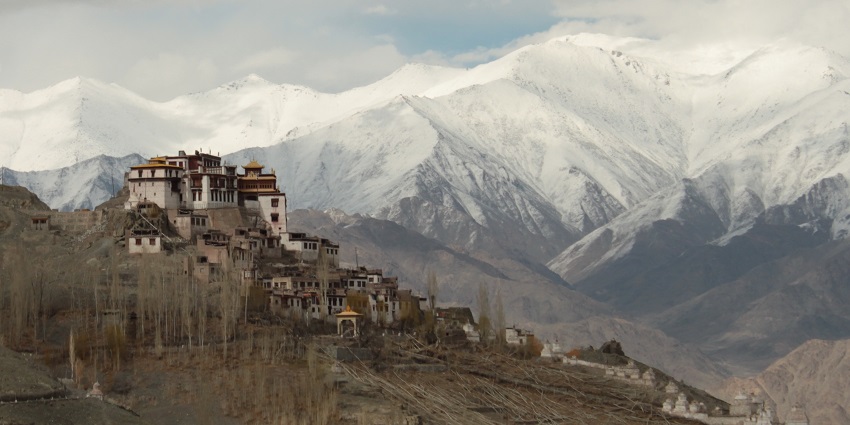
Photo: Nellyrieuf / Wikimedia Commons
Matho Monastery is the only monastery in Ladakh belonging to the Sakyapa sect of Tibetan Buddhism and was founded in the 16th century by Lama Dugpa Dorje. Matho is known for its unique cultural and spiritual significance. In the monastery’s famous annual Matho Nagrang Festival, monks who are trained as oracles perform mystical rituals and predict the future. Matho also houses a collection of ancient thangkas, statues, and precious Buddhist artefacts. Set against the backdrop of the Indus Valley, the monastery offers stunning views and a peaceful environment for visitors.
Entry Fee: ₹30 – ₹50 per person for both Indian and foreign tourists
Distance From The National Park: 30 km
Suggested Read: Enhance Your Vacation With These Things To Do In Ladakh
Other Factors To Consider
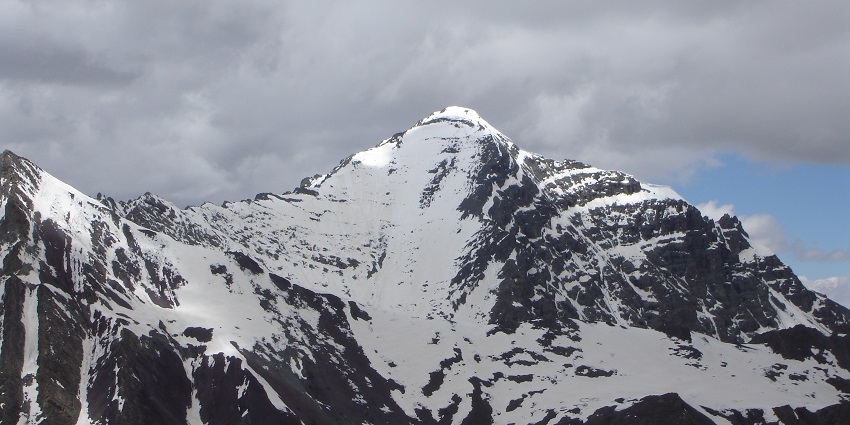
Photo: Maverick34 / Wikimedia Commons / Image For Representation Only
Average Cost Of The Trip
The average cost of a trip to Hemis National Park depends on factors like accommodation, transportation, and the type of activities chosen. The estimated total for a 3-4 day trip can range anywhere between ₹15,000 to ₹40,000 (depending upon budget-friendly or high-end travel).
Tips For Travellers
- Acclimatise to the high altitude properly by spending some time in Leh before heading towards the national park.
- Bring layers of clothing, including thermal wear, waterproof jackets, and good trekking shoes.
- Drinking plenty of water is advisable to stay hydrated, especially in the dry, high-altitude climate. Carrying a reusable water bottle and purification tablets can also come in handy.
- Consider hiring a local guide for trekking and wildlife spotting. They provide valuable insights into the region’s ecology and culture.
- Ensure you have the necessary permits for trekking in protected areas.
- Mobile signals can be weak or non-existent in the park. Inform someone about your itinerary and check in regularly if possible.
- Follow eco-friendly practices by carrying back your waste and respecting the natural environment.
Therefore, for those planning to visit Hemis National Park, it promises an incredible journey through rugged landscapes, high-altitude trekking, and opportunities to spot rare wildlife like the snow leopard. With its rich biodiversity and serene monasteries, the park offers an unparalleled experience for nature enthusiasts and spiritual seekers alike. Plan a trip with TripXL to Ladakh to explore this surreal national park nestled within the breathtaking Himalayas.
Cover Photo: Paras31194 / Wikimedia Commons


 WhatsApp
WhatsApp
 Twitter
Twitter









